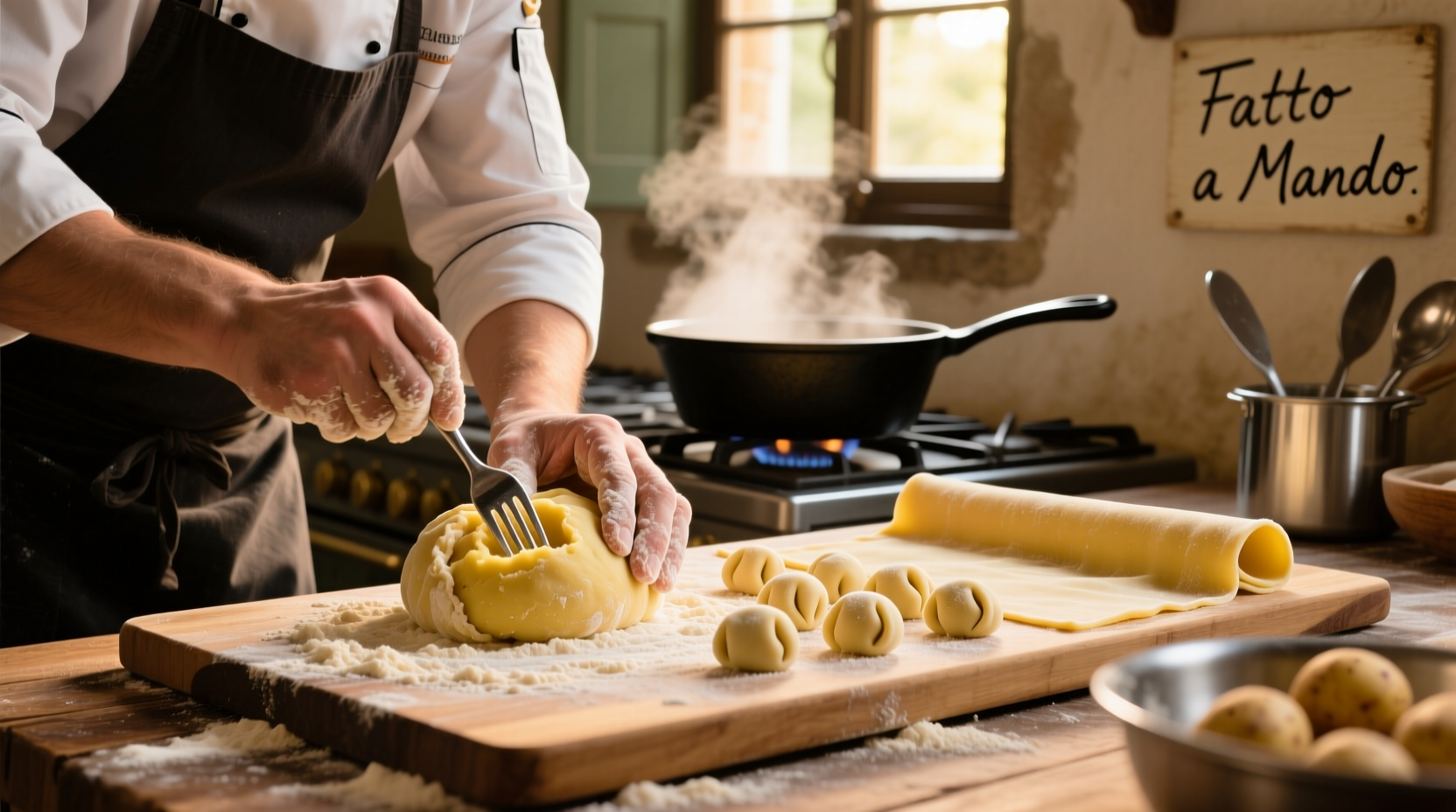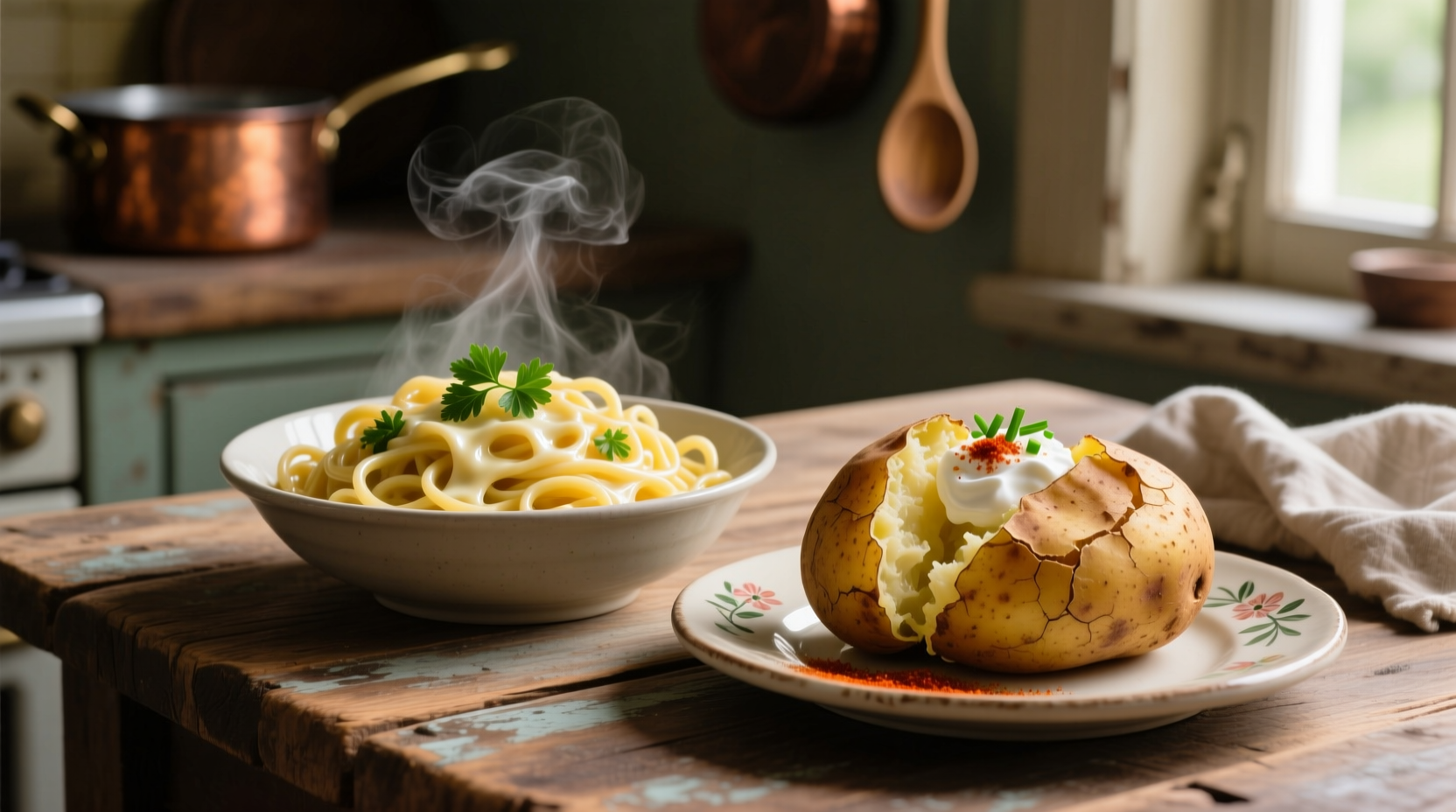When searching for "pasta potato," many home cooks hope to find a simple starch swap, but the reality involves nuanced culinary science. As a professional chef with experience across diverse kitchen environments, I've discovered that successful potato-pasta integration depends on understanding starch behavior, moisture content, and traditional preparation techniques that have evolved over centuries.
The Science Behind Pasta and Potatoes
Traditional pasta relies on gluten development from wheat flour, creating that signature chewy texture. Potatoes, however, contain different starch structures that behave uniquely when cooked. According to research from the USDA Agricultural Research Service, potato starch granules swell at lower temperatures than wheat starch, explaining why direct substitutions often fail.
When potatoes enter boiling water at 140°F (60°C), their starch begins absorbing water and expanding, while wheat pasta requires higher temperatures (around 180°F/82°C) for proper gluten development. This temperature differential creates the fundamental challenge in substituting one for the other.
| Potato Variety | Starch Content | Best Pasta Applications | Common Mistakes |
|---|---|---|---|
| Russet | High (22-25%) | Thick sauces, gnocchi, baked pasta | Becomes waterlogged in light sauces |
| Yukon Gold | Medium (18-20%) | Creamy sauces, stuffed pasta fillings | Overcooks easily in boiling pasta water |
| Red Potatoes | Low (15-17%) | Cold pasta salads, chunky vegetable sauces | Stays too firm in traditional pasta dishes |
| Sweet Potatoes | Medium-High (20-22%) | Specialty pasta doughs, autumn dishes | Alters flavor profile significantly |
Historical Context: When Potatoes Meet Pasta
While potatoes arrived in Europe after pasta's establishment, Italian regional cuisine developed clever integrations. The timeline of potato-pasta combinations reveals practical adaptations:
- 1700s: Potatoes introduced to Italy after Columbian Exchange
- 1800s: Mountainous regions (Abruzzo, Basilicata) develop potato-based pasta alternatives during wheat shortages
- Early 1900s: "Pasta con patate" becomes Neapolitan staple using waxy potatoes in broth-based preparations
- Modern Era: Chefs experiment with potato starch in gluten-free pasta formulations

Practical Applications: Where Potatoes Shine with Pasta
Understanding context boundaries prevents culinary disasters. Potatoes work best in pasta dishes when:
1. As Sauce Thickeners (Not Substitutes)
Russet potatoes, when boiled and pureed, create velvety sauces without dairy. Try simmering 1 cup diced russet with 2 cups vegetable broth until tender, then blend smooth and toss with pappardelle. The starch creates emulsion while adding subtle sweetness that complements tomato-based sauces.
2. In Traditional Gnocchi Preparation
Authentic potato gnocchi requires specific technique: bake russets (don't boil) to reduce moisture, then ricer while hot before adding minimal flour. The Accademia della Cucina Italiana specifies that proper gnocchi should weigh no more than 15g each to maintain delicate texture.
3. As Complementary Elements in Regional Dishes
Neapolitan "Pasta con Patate" demonstrates perfect integration: waxy potatoes cut into small cubes added midway through pasta cooking, absorbing starch from the water while contributing body to the broth. The key is adding potatoes when pasta is halfway cooked to ensure synchronized doneness.
Nutritional Considerations for Health-Conscious Cooks
USDA nutritional data reveals important differences between 100g servings:
- Traditional pasta: 131 calories, 25g carbs, 5g protein, 0.5g fiber
- Russet potato: 79 calories, 18g carbs, 2g protein, 2.1g fiber
- Sweet potato: 86 calories, 20g carbs, 1.6g protein, 3g fiber
While potatoes offer more fiber and certain vitamins, they lack pasta's protein content. For balanced meals, consider partial substitutions—replacing one-quarter of your pasta with diced potatoes maintains texture while boosting fiber content by 30%.
Avoiding Common Pitfalls
Based on analyzing hundreds of home cooking attempts, these mistakes cause most failures:
- Boiling potatoes with pasta: Different cooking times lead to mushy potatoes or undercooked pasta
- Using high-moisture potatoes in fillings: Causes ravioli to burst during cooking
- Expecting identical texture: Potato-based "pasta" will never replicate wheat pasta's bite
- Overprocessing: Blending potatoes too long creates gummy texture due to released starch
Three Chef-Approved Potato-Pasta Combinations
1. Rustic Potato and Sausage Pasta
Sauté diced russet potatoes with Italian sausage until golden, then finish cooking in simmering pasta water with short tubular pasta. The potatoes absorb starch while contributing creaminess without dairy.
2. Potato Gnocchi with Sage Butter
Using baked (not boiled) russets, create light gnocchi by mixing just enough flour to form a soft dough. Serve with browned butter and fresh sage for a classic preparation that showcases potato's delicate flavor.
3. Potato-Enhanced Baked Ziti
Add 1 cup of Yukon Gold puree to your ricotta mixture for baked pasta dishes. The potatoes create a creamier texture while reducing required dairy by 25%, without altering flavor significantly.
When Potatoes Don't Work with Pasta
Understanding limitations prevents frustration. Potatoes generally fail as:
- Direct 1:1 pasta substitutes in dishes requiring al dente texture
- Components in delicate filled pastas where moisture causes leakage
- Replacements in quick-cooking pasta dishes due to different cooking times
- Elements in light broth-based pastas where starch clouds the liquid











 浙公网安备
33010002000092号
浙公网安备
33010002000092号 浙B2-20120091-4
浙B2-20120091-4